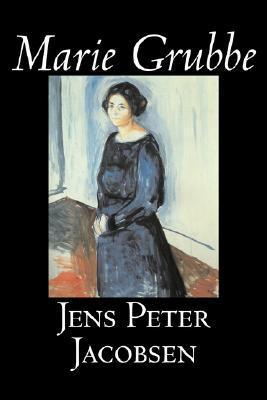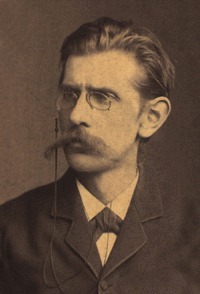
Author

Jacobsen was born in Thisted in Jutland, the eldest of the five children of a prosperous merchant. He went to school in Copenhagen and was a student at the University of Copenhagen in 1868. As a boy, he showed a remarkable talent for science, in particular botany. In 1870, although he was already secretly writing poetry, Jacobsen adopted botany as a profession. He was sent by a scientific body in Copenhagen to report on the flora of the islands of Anholt and Læsø. Around this time, the discoveries of Charles Darwin began to fascinate him. Realizing that the work of Darwin was not well known in Denmark, he translated The Origin of Species and The Descent of Man into Danish. When still young, Jacobsen was struck by tuberculosis which eventually ended his life. His illness prompted travels to southern Europe. Literary works: Jacobsen's canon consists of two novels, seven short stories, and one posthumous volume of poetry—small, but enough to place him as one of the most influential Danish writers. Prose: The historical novel Fru Marie Grubbe (1876, Eng. trans.: Marie Grubbe: A Lady of the Seventeenth Century, 1917) is the first Danish treatment of a woman as a sexual creature. Based upon the life of an authentic 17th century Danish noblewoman, it charts her downfall from a member of the royal family to the wife of a ferryman, as a result of her desire for an independent and satisfying erotic life. In many ways the book anticipates the themes of D. H. Lawrence. Jacobsen's second novel, Niels Lyhne (1880, Eng. trans. 1919), traces the fate of an atheist in a merciless world: his lack of faith is "tested" by tragedies and personal crises until he dies in war, disillusioned but unrepentant. Jacobsen's short stories are collected in Mogens og andre Noveller (1882, translated as Mogens and Other Tales, 1921, and Mogens and Other Stories, 1994). Among them must be mentioned "Mogens" (1872—his official debut), the tale of a young dreamer and his maturing during love, sorrow and new hope of love. "Et Skud i Taagen" ("A Shot in the Fog") is a Poe-inspired tale of the sterility of hatred and revenge. "Pesten i Bergamo" ("The Plague of Bergamo") shows people clinging to religion even when tempted to be "free men". Fru Fønss (1882) is a sad story about a widow's tragic break with her egoistic children when she wants to remarry. Mogens og andre Noveller and Niels Lyhne were both highly praised by Rainer Maria Rilke in his letters to Franz Xaver Kappus, translated as Letters to a Young Poet. Poetry: The poems of Jacobsen are more influenced by late romanticism than his prose. Many of them are wistful, dreamy and melancholic but also naturalistic. Most important is the great obscure poem "Arabesque to a Hand-drawing by Michel Angelo" (about 1875) the idea of which seems to be that art is going to replace immortality as the meaning of life. They significantly inspired the Danish symbolist poetry of the 1890s.